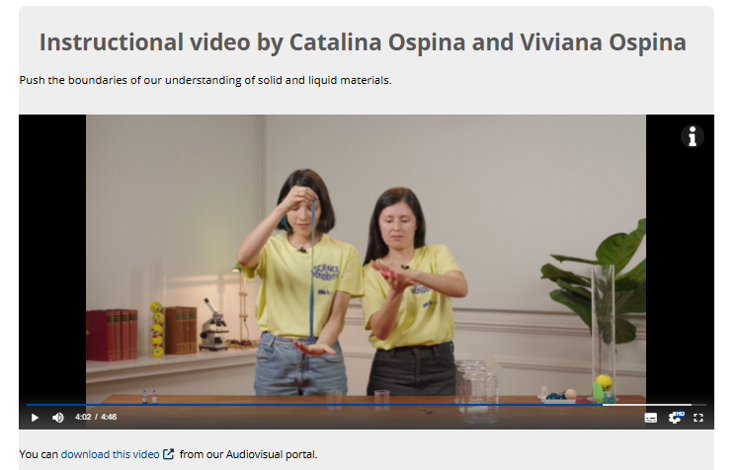In the common language, concepts as solid or liquid, are frequently over simplified, if ones consider the definition of the three states of matter, where it is generally accepted that solids have fixed shapes and liquids flow. However, upon observation it is noticed that some materials present liquid-like characteristic when subjected to sufficient external stress, while if the stress is insufficient, they will retain their shape. Therefore, there is a need to evidence the complex mechanical performance that different material can undergo, which is key parameter for determining its suitability in different technological applications.
The article published in the journal Science in School, is an educational guide is designed to introduce material science concepts such as polymers, mechanical properties, viscoelasticity and chemical reactions in a classroom environment. It consists in three consecutive activities that can be followed by students of different ages.
Activity 1 encourages students to explore the different stress responses of materials. At the end of the first activity, a discussion is guided through questions that can be adapted for different academic levels, aiming to evidence that, based on the observable properties, some materials seem to have properties of solid and liquids under different conditions. The discussion frames the context to introduce the concepts of elastic and viscous behavior, the components of the complex viscoelastic performance of materials, which is indeed, a more accurate way to describe the materials properties than the traditional “states-of-matter” approach.
In Activity 2, students, organized in groups obtain slime by using school glue, sodium bicarbonate, and contact lenses solution. The chemical reaction among the components is schematically explained. Moreover, a variation on the proportion of the reagents is given to obtain materials with different behavior from viscous-liquid to elastic-solid. The discussion is then followed on how the proportion of the components affect the mobility and hardness of the materials. This activity provides an opportunity to present topics as chemical reactions, polymers, mechanical characterization and/or structure-property relationships depending on the school grade.
Activity 3 presents a team challenge, where students need to tailor their polymer to a particular application: jelly sauce or bouncing ball. With enough students, the activity can include a competition to select the most appropriate formulation for each purpose. The discussion is then guided to describe the viscoelastic properties of everyday materials.
The communication effort was complemented with a video produced in collaboration with Marie Skłodowska-Curie actions from the European Commission.

The mentioned resources compose the didactical proposal designed for school teachers, aimed to explore topics in the field of materials science, such as polymers and viscoelasticity, concepts that material scientists consider to tune the performance of materials through chemical reactions, making them functional for different needs by modifying their composition, arrangement, and polymer interactions. Moreover, it sets opportunity to use the scientific method, designing experiments, changing one variable at a time, and defining tests for relevant properties.
The preparation of this strategy was part of the Ph.D. of Catalina Ospina, where the concepts such as the solid or liquid nature of materials is explored in the field of icephobicity.
